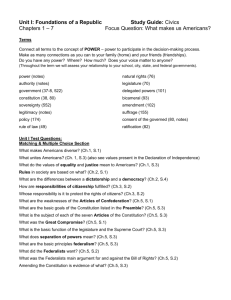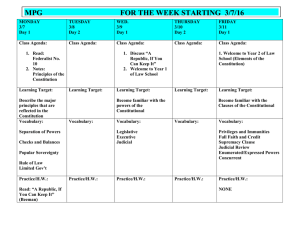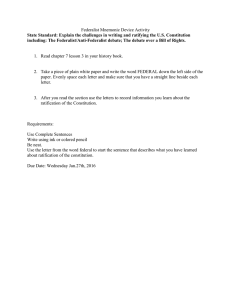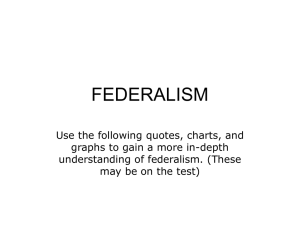AP US HISTORY UNIT 3 PART 3 THE CONSTITUTION 1786-1800
advertisement
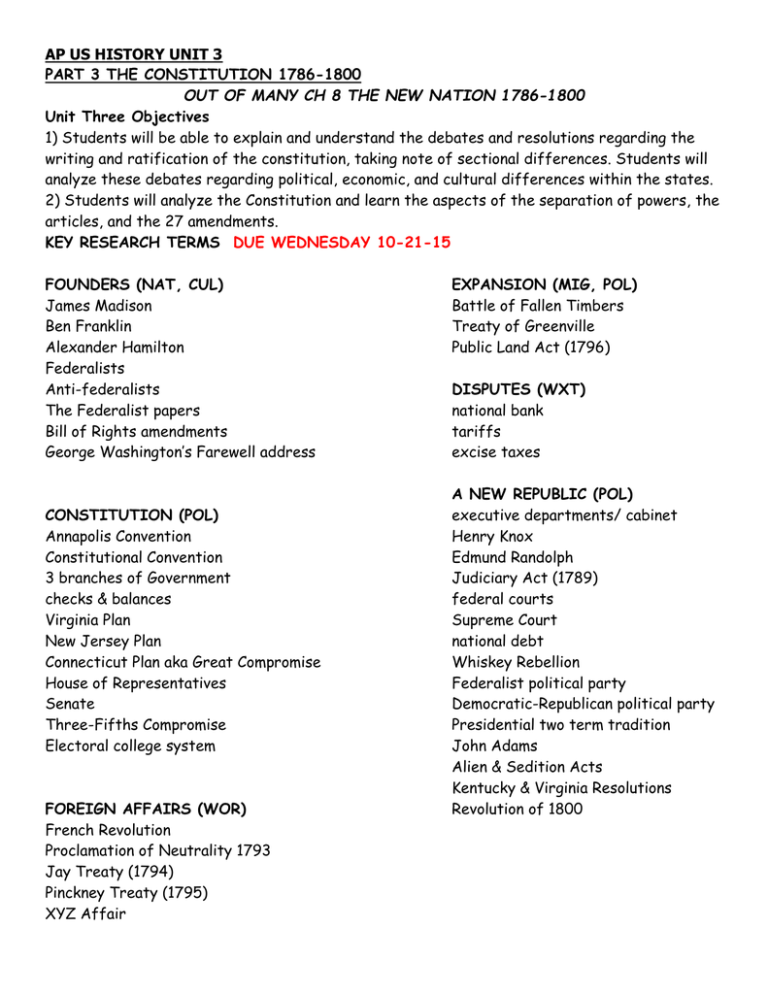
AP US HISTORY UNIT 3 PART 3 THE CONSTITUTION 1786-1800 OUT OF MANY CH 8 THE NEW NATION 1786-1800 Unit Three Objectives 1) Students will be able to explain and understand the debates and resolutions regarding the writing and ratification of the constitution, taking note of sectional differences. Students will analyze these debates regarding political, economic, and cultural differences within the states. 2) Students will analyze the Constitution and learn the aspects of the separation of powers, the articles, and the 27 amendments. KEY RESEARCH TERMS DUE WEDNESDAY 10-21-15 FOUNDERS (NAT, CUL) James Madison Ben Franklin Alexander Hamilton Federalists Anti-federalists The Federalist papers Bill of Rights amendments George Washington’s Farewell address CONSTITUTION (POL) Annapolis Convention Constitutional Convention 3 branches of Government checks & balances Virginia Plan New Jersey Plan Connecticut Plan aka Great Compromise House of Representatives Senate Three-Fifths Compromise Electoral college system FOREIGN AFFAIRS (WOR) French Revolution Proclamation of Neutrality 1793 Jay Treaty (1794) Pinckney Treaty (1795) XYZ Affair EXPANSION (MIG, POL) Battle of Fallen Timbers Treaty of Greenville Public Land Act (1796) DISPUTES (WXT) national bank tariffs excise taxes A NEW REPUBLIC (POL) executive departments/ cabinet Henry Knox Edmund Randolph Judiciary Act (1789) federal courts Supreme Court national debt Whiskey Rebellion Federalist political party Democratic-Republican political party Presidential two term tradition John Adams Alien & Sedition Acts Kentucky & Virginia Resolutions Revolution of 1800 Essential Information DUE MONDAY 10-26-15 1. What arguments were presented in the debate over ratification of the U.S. Constitution? Tie any and all information from your key research terms to fully answer this question. (will be answered after your research is completed and the chapter is read) 2. Scavenger Hunt in the Constitution (info from teacher keynote & research sources) Make yourself a chart of the SEPARATION of POWERS A. Powers reserved for the Federal Government B. Powers reserved for the State Governments C. Powers shared by Federal and State Governments D. Restrictions on the Federal Government E. Restrictions on State Governments F. Required percentages for voting Detail the provisions of each of the seven Articles of the Constitution with a short summary description. Detail the twenty seven amendments to the Constitution with a short summary including dates, description & visuals (you will be referring to this all year)




